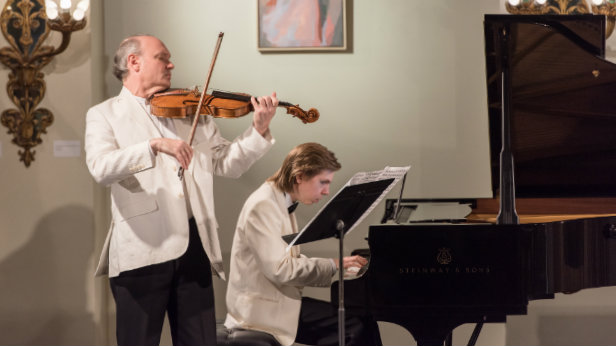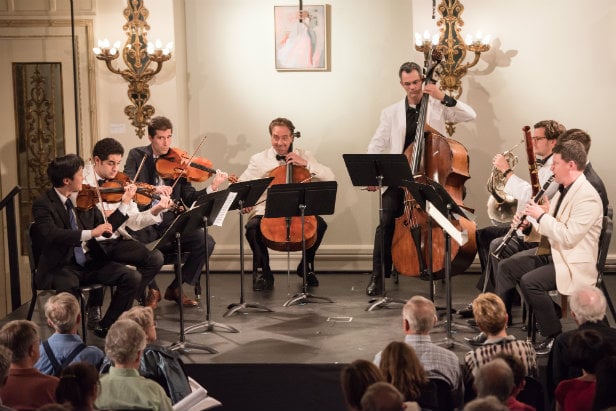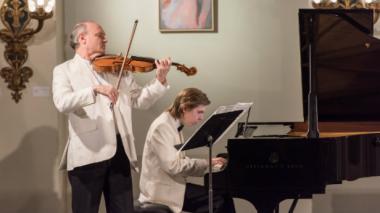
In the ongoing Schubert celebration that is the 2015 edition of the Music@Menlo Festival, last weekend’s fantastic concert, “Metamorphosis 1822 - 1824”, focused on the period in which the composer created three seminal works: the “Arpeggione” Sonata; the “Wanderer” Fantasy; and the Octet for Winds and Strings.
Schubert wrote the Sonata in A Minor for Arpeggione and Piano, D. 821, in 1824. The arpeggione — a cross between a cello and a guitar, with six strings and played with a bow — had just been invented by a Viennese guitar luthier, and it remained popular for about a decade before falling into obscurity.
Schubert’s sonata is the only substantial piece written for the arpeggione. In modern performances the solo is often transcribed for viola, as was the case last Sunday evening at Stent Family Hall on the Menlo School campus in Atherton, when Paul Neubauer gave a blistering rendition of the piece together with Finnish pianist Juho Pohjonen.
In complete harmony, Neubauer and Pohjonen navigated the virtuosic score and its rapid succession of moods and expressions, which sometimes change from one bar to the next. In complete harmony, Neubauer and Pohjonen navigated the virtuosic score and its rapid succession of moods and expressions, which sometimes change from one bar to the next.
Pohjonen also accompanied Russian baritone Nikolay Borchev, who sang two of Schubert’s lieder: “Abendstern,” in which the protagonist addresses a star in the evening sky, and “Der Wanderer,” which describes a lonely hiker contemplating life in general and his own existence in particular.
Borchev’s voice is a wonderfully resonant and powerful instrument, and the performance was very impressive (and much loved by the M@M audience), but with Schubert and his lieder, a lighter voice and more intimate vocal gestures seem more natural.
Pohjonen switched sensibilities for the “Wanderer” Fantasy. As a soloist, he left part of his musical refinement as accompanist behind to meet the technical demands of the piece, a piano sonata in all but its name.
Legend has it that Schubert himself wasn’t able to play the “Wanderer” Fantasy to his own satisfaction, but Pohjonen pulled it off more than admirably, getting increasingly more lyrical in the variations of the Adagio and gaining expressive momentum throughout the lively Presto and the powerful Allegro finale.

And then there was the Octet for strings and winds, played by eight gentlemen-musicians: Alexander Fiterstein, clarinet; Peter Kolkay, bassoon; Kevin Rivard, horn; Sean Lee, Arnaud Sussmann, violins; Pierre Lapointe, viola; Scott Pingel, bass; and festival co-director David Finckel sitting in on cello for the injured Dmitri Atapine.
As an ensemble, the octet is the smallest possible reduction of a symphony orchestra, preserving the range of dynamic and tonal expression of its larger counterpart.
As a score however, there is nothing ‘reduced’ about the Octet. Its six movements span about an hour, and when it comes to complexity, and dramatic and emotional scope, it is certainly on par with the eight symphonies that Schubert had finished by the time he wrote the piece in February/March of 1824.
Attending the performance of Schubert’s Octet at Music@Menlo was not only an acoustic and musical pleasure, but also a very close theatrical experience.
It was fascinating to watch the musicians’ concentration while constantly shifting their focus, musical relationships and loyalties, making eye contact, finding each other to jointly execute a certain phrase or motif, or passing solo melodies back and forth.
It was truly magnificent.

